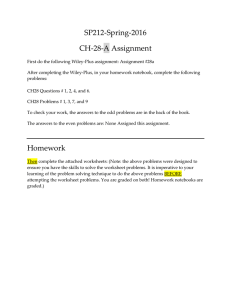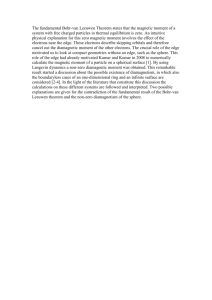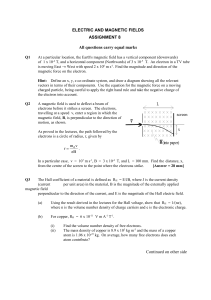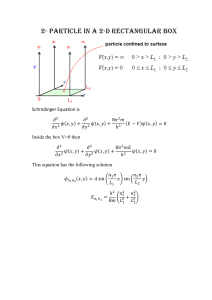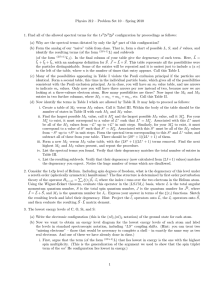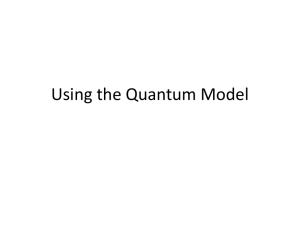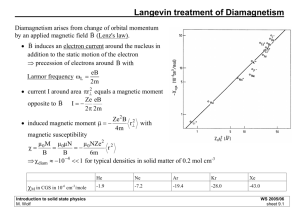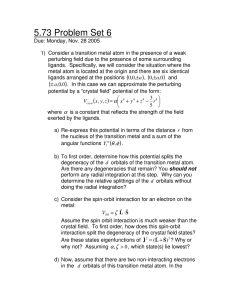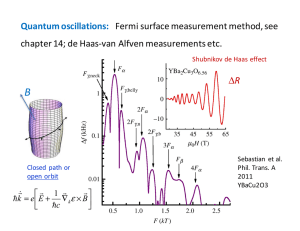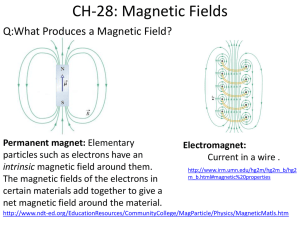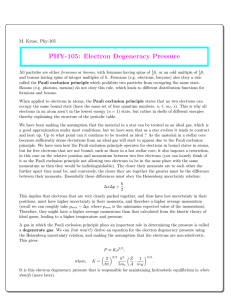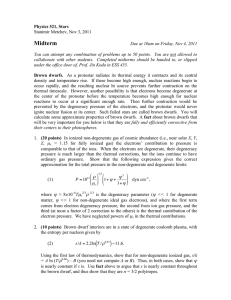Homework 5 (due Friday, October, 31 - spooky)
advertisement
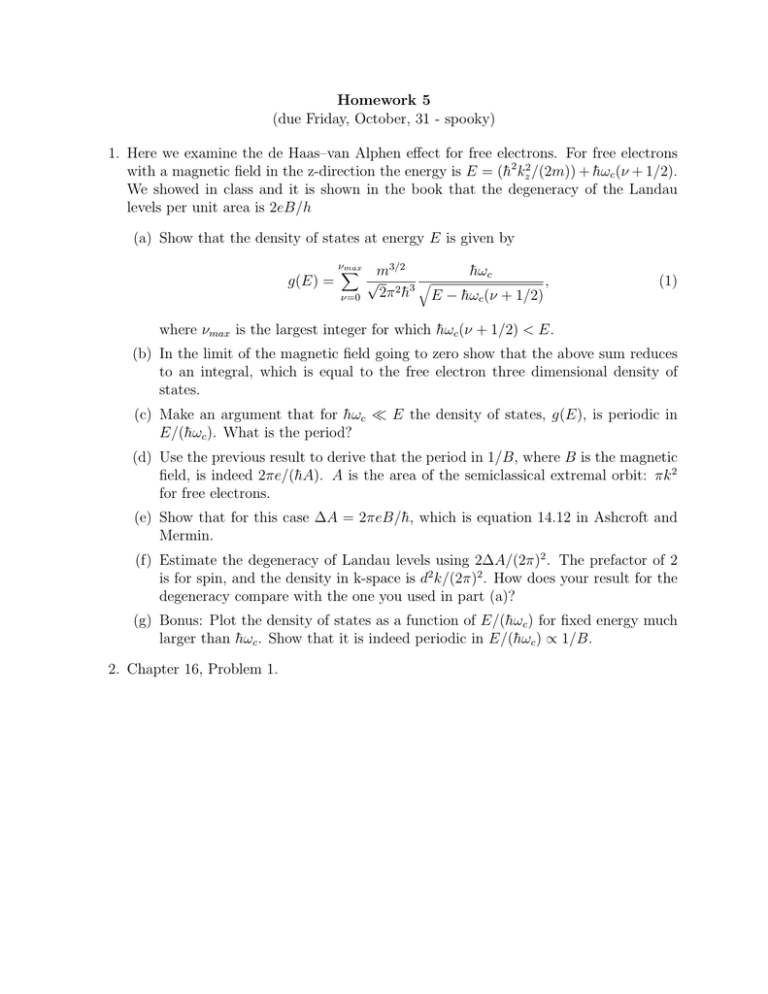
Homework 5 (due Friday, October, 31 - spooky) 1. Here we examine the de Haas–van Alphen effect for free electrons. For free electrons with a magnetic field in the z-direction the energy is E = (h̄2 kz2 /(2m)) + h̄ωc (ν + 1/2). We showed in class and it is shown in the book that the degeneracy of the Landau levels per unit area is 2eB/h (a) Show that the density of states at energy E is given by g(E) = νX max ν=0 h̄ωc m3/2 q √ , 3 2π 2 h̄ E − h̄ωc (ν + 1/2) (1) where νmax is the largest integer for which h̄ωc (ν + 1/2) < E. (b) In the limit of the magnetic field going to zero show that the above sum reduces to an integral, which is equal to the free electron three dimensional density of states. (c) Make an argument that for h̄ωc E the density of states, g(E), is periodic in E/(h̄ωc ). What is the period? (d) Use the previous result to derive that the period in 1/B, where B is the magnetic field, is indeed 2πe/(h̄A). A is the area of the semiclassical extremal orbit: πk 2 for free electrons. (e) Show that for this case ∆A = 2πeB/h̄, which is equation 14.12 in Ashcroft and Mermin. (f) Estimate the degeneracy of Landau levels using 2∆A/(2π)2 . The prefactor of 2 is for spin, and the density in k-space is d2 k/(2π)2 . How does your result for the degeneracy compare with the one you used in part (a)? (g) Bonus: Plot the density of states as a function of E/(h̄ωc ) for fixed energy much larger than h̄ωc . Show that it is indeed periodic in E/(h̄ωc ) ∝ 1/B. 2. Chapter 16, Problem 1.
